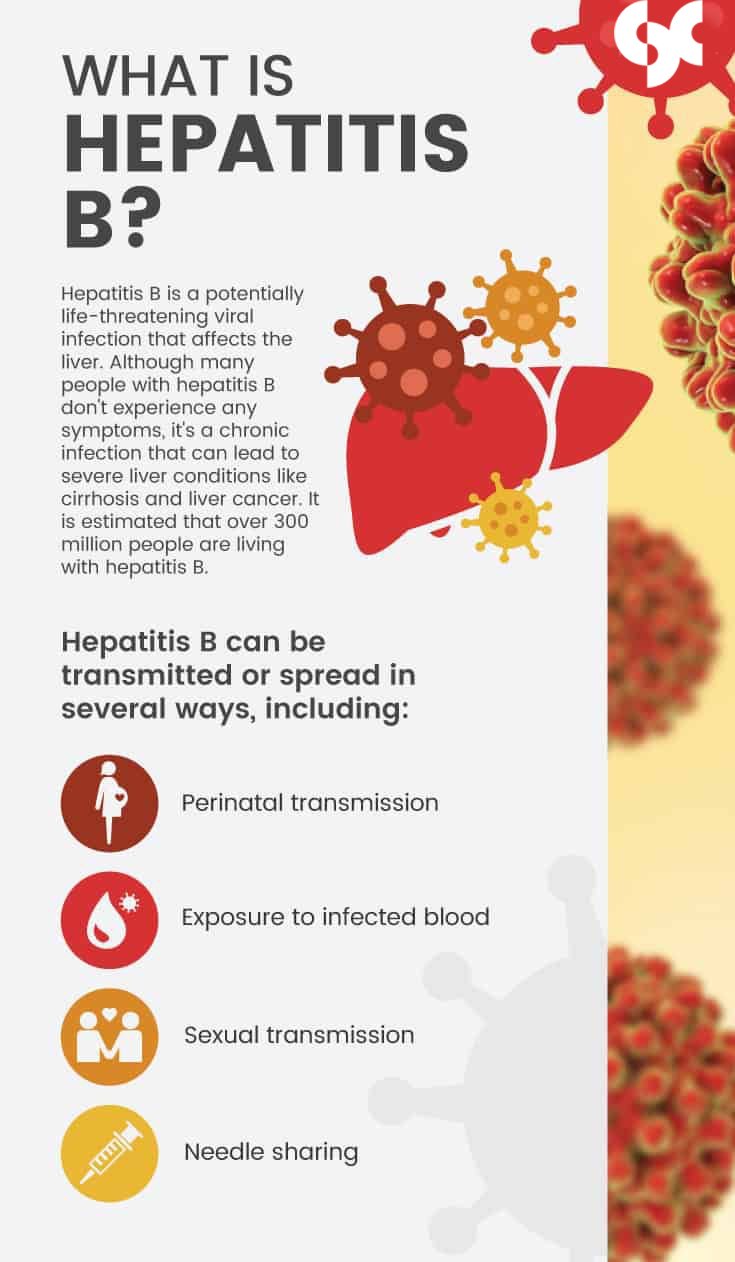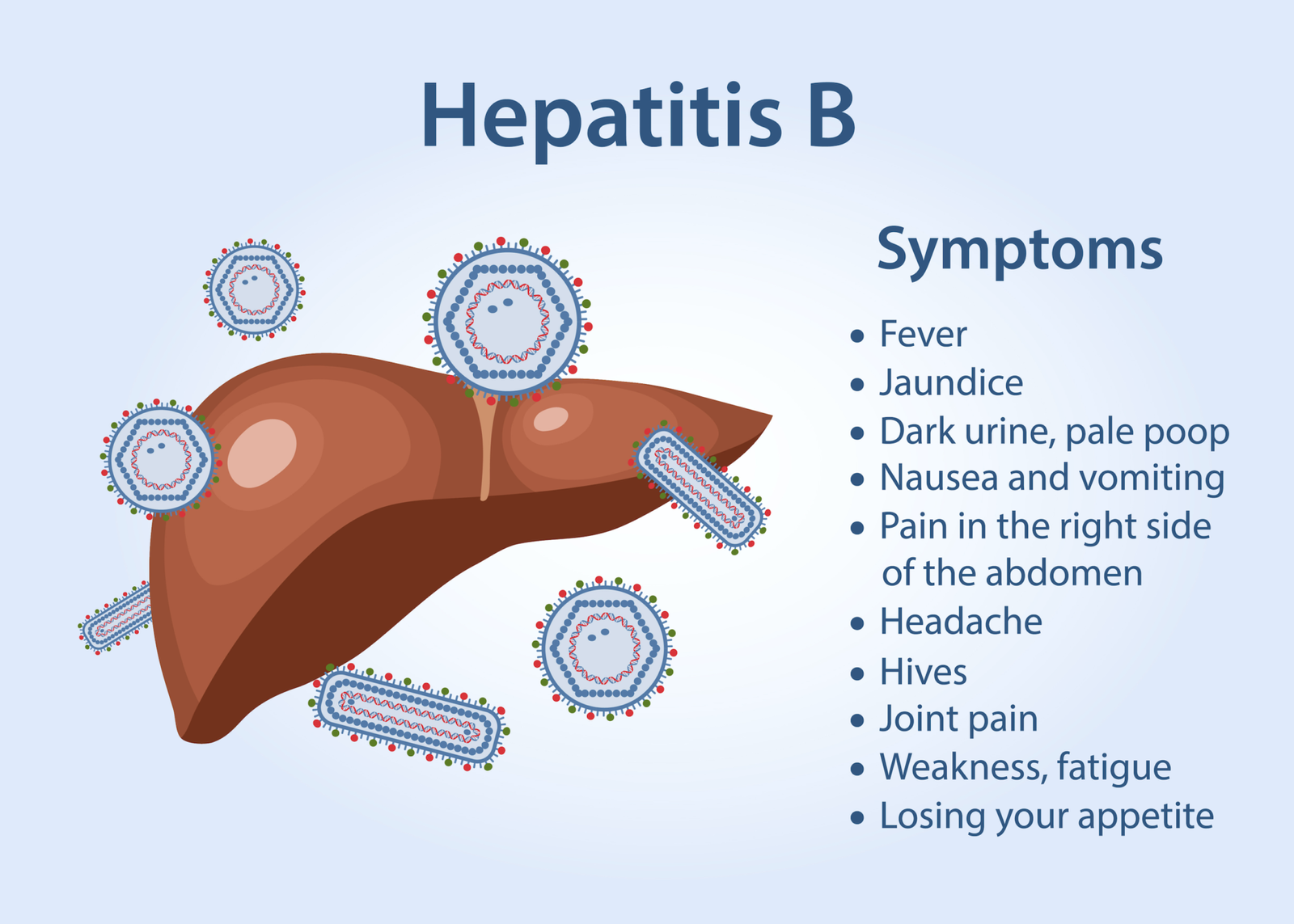
Hepatitis B is a vaccine-preventable liver infection caused by the Hepatitis B virus (HBV). Hepatitis B is spread when blood, semen, or other body fluids from a person infected with the virus enters the body of someone who is not infected. This can happen through sexual contact; sharing needles, syringes, or other drug-injection equipment; or during pregnancy or delivery. Not all people newly infected with HBV have symptoms, but for those that do, symptoms can include fatigue, poor appetite, stomach pain, nausea, and jaundice. For many people, hepatitis B is a short-term illness. For others, it can become a long-term, chronic infection that can lead to serious, even life-threatening health issues like liver disease or liver cancer. Age plays a role in whether hepatitis B will become chronic. The younger a person is when infected with the hepatitis B virus, the greater the chance of developing chronic infection. About 9 in 10 infants who become infected go on to develop life-long, chronic infection. The risk goes down as a child gets older. About one in three children who get infected before age 6 will develop chronic hepatitis B. By contrast, almost all children 6 years and older and adults infected with the hepatitis B virus recover completely and do not develop chronic infection.
The best way to prevent hepatitis B is to get vaccinated. All adults aged 18-59 should receive the vaccine and any adult who requests it may get the vaccine. All adults 18 years and older should get screened at least once in their lifetime.

Not all people with acute HBV infection have symptoms. Symptoms can range from asymptomatic or mild disease to, rarely, fulminant hepatitis. The presence of signs and symptoms varies by age. Infants, children under 5 years old, and immunosuppressed adults with acute HBV infection are typically asymptomatic. People less than 30 years old are less likely to be symptomatic compared with persons aged 30 years and older (6). When present, signs and symptoms of acute HBV infections can include:
Most people with chronic HBV infection are asymptomatic and have no evidence of liver disease or injury. However, some people develop chronic hepatitis (elevation of AST/ALT), cirrhosis, or hepatocellular carcinoma (i.e., primary liver cancer).
HBV is transmitted from a person who has HBV infection to a person who is not infected through activities that involve percutaneous (i.e., puncture through the skin) or mucosal contact with infectious blood or body fluids (e.g., semen and saliva), including
Clinicians should screen all adults aged 18 years and older for HBV infection at least once during their lifetime using the triple panel test which includes hepatitis B surface antigen (HBsAg), antibody to hepatitis B surface antigen (anti-HBs), and total antibody to hepatitis B core antigen total anti-HBc.
Clinicians should test all infants born to pregnant people who are HBsAg positive or have other evidence of HBV infection for HBsAg and anti-HBs seromarkers, at 9-12 months of age or 1-2 months after vaccine series completion if the series is delayed.
Clinicians should screen all pregnant people for hepatitis B surface antigen (HBsAg) during each pregnancy, preferably in the first trimester, regardless of vaccination status or history of testing (11). Pregnant people with a history of appropriately timed triple panel screening and without subsequent risk for exposure to HBV (i.e., no new HBV exposures since triple panel screening) only need HBsAg screening.
The Health Department recommends that the following people should receive hepatitis B vaccination:
The following groups may receive hepatitis B vaccination: